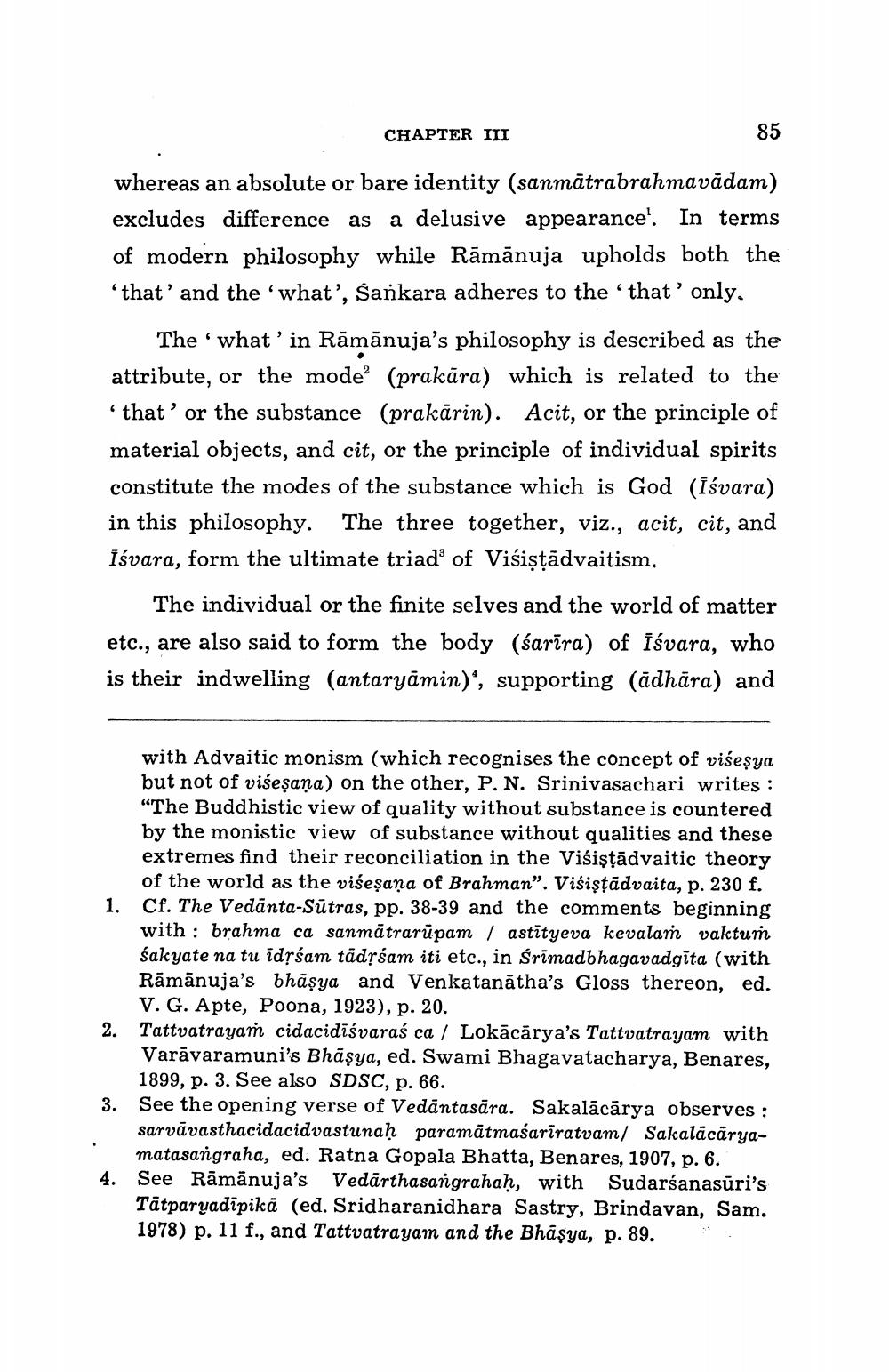________________
CHAPTER III
85
whereas an absolute or bare identity (sanmātrabrahmavādam) excludes difference as a delusive appearance'. In terms of modern philosophy while Rāmānuja upholds both the 'that' and the 'what', sankara adheres to the 'that' only.
The 'what' in Rāmānuja's philosophy is described as the attribute, or the mode (prakāra) which is related to the 'that’or the substance (prakārin). Acit, or the principle of material objects, and cit, or the principle of individual spirits constitute the modes of the substance which is God (īśvara) in this philosophy. The three together, viz., acit, cit, and iśvara, form the ultimate triad of Viśistādvaitism.
The individual or the finite selves and the world of matter etc., are also said to form the body (śarīra) of īśvara, who is their indwelling (antaryāmin)“, supporting (ādhāra) and
with Advaitic monism (which recognises the concept of viseşya but not of višeşaņa) on the other, P.N. Srinivasachari writes : “The Buddhistic view of quality without substance is countered by the monistic view of substance without qualities and these extremes find their reconciliation in the Višiştādvaitic theory of the world as the višeşana of Brahman". Višiştādvaita, p. 230 f. Cf. The Vedānta-Sūtras, pp. 38-39 and the comments beginning with : brahma ca sanmätrarūpam / astītyeva kevalar vaktum sakyate na tu idrśam tādssam iti etc., in śrīmadbhagavadgita (with Rāmānuja's bhāşya and Venkatanātha's Gloss thereon, ed.
V. G. Apte, Poona, 1923), p. 20. 2. Tattvatrayam cidacidīśvaraś ca / Lokācārya's Tattvatrayam with
Varāvaramuni's Bhāşya, ed. Swami Bhagavatacharya, Benares,
1899, p. 3. See also SDSC, p. 66. 3. See the opening verse of Vedāntasāra. Sakalācārya observes :
sarvāvasthacidacidvastunaḥ paramātmaśarīratvam/ Sakalācāryamatasangraha, ed. Ratna Gopala Bhatta, Benares, 1907, p. 6. See Rāmānuja's Vedārthasangrahaḥ, with Sudarśanasūri's Tātparuadīpikä (ed. Sridharanidhara Sastry, Brindavan, Sam. 1978) p. 11 f., and Tattvatrayam and the Bhāşya, p. 89.




